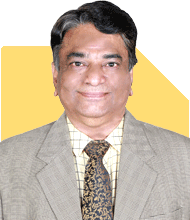Ramalingam Kalirajan |6083 Answers |Ask -Follow
Mutual Funds, Financial Planning Expert - Answered on Jul 15, 2024
He has an MBA in finance from the University of Madras and is a certified financial planner.
He is the director and chief financial planner at Holistic Investment, a Chennai-based firm that offers financial planning and wealth management advice.... more

Hi, i am 58 year old with a salary of 130000 pm and savings of 1.22 cr in MF and 1.24 cr in FD, 81 lackhs in post office and around 75 lakhs in PPF and 11 lakhs in LIC. I have house loan of around 15 lakhs. I want to retire next year, can i have monthly earnings of1.25 lakhs per month with this savings.
Understanding Your Financial Goals
Retirement is a significant milestone. You want to ensure financial security and maintain your lifestyle. A monthly income of Rs 1.25 lakhs translates to an annual requirement of Rs 15 lakhs. Given your savings, achieving this is feasible with the right strategy.
Complimenting Your Financial Savviness
Firstly, let’s appreciate your disciplined saving habits. Accumulating such substantial savings across various instruments is commendable. It shows a strong commitment to financial stability and foresight in planning for retirement.
Analyzing Your Assets
Mutual Funds (MF)
Your investment of Rs 1.22 crores in mutual funds is impressive. Mutual funds can offer good returns, but it’s essential to ensure they are actively managed. Actively managed funds, guided by experienced fund managers, can adapt to market changes and potentially offer better returns than passive index funds.
Fixed Deposits (FD)
You have Rs 1.24 crores in fixed deposits. While FDs offer safety and guaranteed returns, the interest rates might not keep pace with inflation. Consider diversifying a portion of this into higher-yielding investments.
Post Office Savings
Your Rs 81 lakhs in post office schemes is another safe investment. These schemes provide reliable returns and are backed by the government. However, they might also offer lower returns compared to other investment avenues.
Public Provident Fund (PPF)
With Rs 75 lakhs in PPF, you have a tax-efficient investment. The PPF offers attractive interest rates, and the returns are tax-free. However, the lock-in period and limits on annual contributions can be restrictive.
Life Insurance Corporation (LIC)
You have Rs 11 lakhs in LIC policies. While LIC provides insurance cover, the returns on traditional LIC policies might not be very high. Consider if these policies are serving your investment needs effectively.
House Loan
Your outstanding house loan of Rs 15 lakhs is manageable. Paying this off could be a priority to reduce financial burden and improve your monthly cash flow.
Strategic Recommendations
Pay Off Your House Loan
Clearing your house loan of Rs 15 lakhs can significantly reduce your financial obligations. It will free up resources and provide peace of mind.
Review and Rebalance Your Portfolio
Mutual Funds
Ensure your mutual fund investments are in actively managed funds. Actively managed funds have the potential to outperform the market, providing better returns. Consult with a certified financial planner to review your mutual fund portfolio. Rebalancing your portfolio to include more equity-oriented funds can enhance returns.
Fixed Deposits
Consider moving a portion of your fixed deposits into mutual funds or other investment avenues. This can provide better returns and help in meeting your monthly income goals.
Post Office Schemes
While post office schemes are safe, their returns might be lower. Diversify a portion into higher-yielding options. This can include mutual funds or other equity investments.
Public Provident Fund
Your PPF investment is sound for tax efficiency and steady returns. However, due to the lock-in period, consider it as a long-term asset rather than a source of immediate income.
Life Insurance Policies
Evaluate your LIC policies. Traditional policies might not offer the best returns. If they are investment-cum-insurance policies, consider surrendering and reinvesting in mutual funds for better returns.
Creating a Monthly Income Stream
To generate a monthly income of Rs 1.25 lakhs, you need a strategic withdrawal plan. Here’s a suggested approach:
Systematic Withdrawal Plans (SWP)
Implement Systematic Withdrawal Plans (SWP) from your mutual funds. SWPs allow regular withdrawals while keeping the principal invested. This can provide a steady income stream and potential capital appreciation.
Laddering Fixed Deposits
Use a laddering strategy for your fixed deposits. Stagger the maturities of your FDs to ensure liquidity and continuous income. This reduces reinvestment risk and ensures a portion of your funds is always available.
Interest Income from Post Office Schemes
Continue to receive interest income from your post office schemes. This can supplement your monthly income and provide a stable source of funds.
PPF Withdrawals
Since PPF has a lock-in period, plan withdrawals strategically. Use PPF withdrawals for long-term goals or emergencies. Avoid relying on it for monthly income due to the restrictions.
Evaluating Risks and Returns
Diversification
Diversification is crucial in managing risks. Ensure your portfolio has a balanced mix of equity, debt, and fixed-income instruments. This approach can provide stability and growth.
Inflation Protection
Consider inflation while planning your retirement income. Investments in equities and equity-oriented mutual funds can offer better protection against inflation.
Tax Efficiency
Focus on tax-efficient investments. Mutual funds, especially equity funds, can offer tax advantages. Use the benefits of long-term capital gains tax to enhance your returns.
Emergency Fund
Maintain an emergency fund to cover unexpected expenses. This should be separate from your investment portfolio. An emergency fund provides security and avoids the need to liquidate investments prematurely.
Ongoing Monitoring and Adjustment
Regular Review
Regularly review your investment portfolio. Market conditions change, and your investments should adapt accordingly. A certified financial planner can help in periodic reviews and adjustments.
Staying Informed
Stay informed about market trends and investment opportunities. Knowledge empowers you to make better decisions. Engage with financial news, and consider joining investment forums.
Professional Guidance
Engage a certified financial planner for ongoing advice. Their expertise can help in optimizing your portfolio and achieving your financial goals. They can provide personalized strategies and adjustments as needed.
Final Insights
Your diligent saving and diverse investments provide a strong foundation for a secure retirement. With careful planning and strategic adjustments, achieving a monthly income of Rs 1.25 lakhs is attainable. Focus on rebalancing your portfolio, optimizing returns, and maintaining a disciplined approach.
Pay off your house loan to reduce liabilities and enhance cash flow. Diversify your investments for better returns and inflation protection. Implement systematic withdrawal plans and use a laddering strategy for fixed deposits.
Engage a certified financial planner for ongoing advice and portfolio management. Regular reviews and staying informed will help in adapting to market changes and achieving your retirement goals.
Your financial journey has been commendable. With these strategies, you can look forward to a secure and fulfilling retirement.
Best Regards,
K. Ramalingam, MBA, CFP,
Chief Financial Planner,
www.holisticinvestment.in
You may like to see similar questions and answers below
Sunil Lala |200 Answers |Ask -Follow
Financial Planner - Answered on Oct 13, 2023
Ramalingam Kalirajan |6083 Answers |Ask -Follow
Mutual Funds, Financial Planning Expert - Answered on Apr 10, 2024
Ramalingam Kalirajan |6083 Answers |Ask -Follow
Mutual Funds, Financial Planning Expert - Answered on May 07, 2024
Ramalingam Kalirajan |6083 Answers |Ask -Follow
Mutual Funds, Financial Planning Expert - Answered on Jul 27, 2024
Ramalingam Kalirajan |6083 Answers |Ask -Follow
Mutual Funds, Financial Planning Expert - Answered on Jul 16, 2024
Ramalingam Kalirajan |6083 Answers |Ask -Follow
Mutual Funds, Financial Planning Expert - Answered on Aug 28, 2024
Maxim Emmanuel |380 Answers |Ask -Follow
Soft Skills Trainer - Answered on Aug 28, 2024
Maxim Emmanuel |380 Answers |Ask -Follow
Soft Skills Trainer - Answered on Aug 28, 2024
Nayagam P P |3577 Answers |Ask -Follow
Career Counsellor - Answered on Aug 28, 2024
Nayagam P P |3577 Answers |Ask -Follow
Career Counsellor - Answered on Aug 28, 2024
Nayagam P P |3577 Answers |Ask -Follow
Career Counsellor - Answered on Aug 28, 2024
Patrick Dsouza |746 Answers |Ask -Follow
CAT, XAT, CMAT, CET Expert - Answered on Aug 27, 2024
Patrick Dsouza |746 Answers |Ask -Follow
CAT, XAT, CMAT, CET Expert - Answered on Aug 27, 2024
Patrick Dsouza |746 Answers |Ask -Follow
CAT, XAT, CMAT, CET Expert - Answered on Aug 27, 2024
Patrick Dsouza |746 Answers |Ask -Follow
CAT, XAT, CMAT, CET Expert - Answered on Aug 27, 2024
























